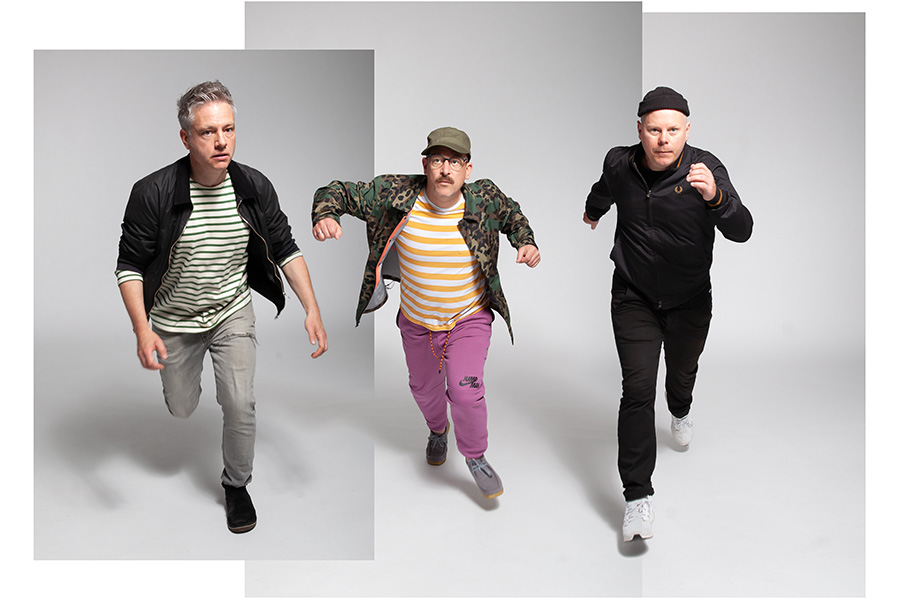In the early 1990s as Stuttgart’s Die Fantastischen Vier were emerging with their take on hip-hop, Hamburg‘s Fettes Brot was trying their hand at it. Today, along with their Stuttgarter colleagues, Fettes Brot is among the groups that helped blaze the trail and popularize hip-hop in Germany in the German language.
It goes without saying that generations of German rappers — from KIZ (and their side-project VSK) to Casper — are appreciative.
Whether you love old-school hip-hop or you are looking to embrace a feeling of nostalgia, this month let’s get to know Fettes Brot and learn the German language!
Get to Know Fettes Brot
Fettes Brot was created initially as a school band. Using the name Boris & the Callboys in 1992, the group was founded by Martin Vandreier (alias Dokter Renz), Boris Lauterbach (alias König Boris), Björn Warns (alias Björn Beton), Kok Göttmann (alias Mighty), and Tobi Tobsen (alias Matula). This was not their first time rapping. Vandreier, Göttmann, and Matula were previously in an English-language hip-hop group called Poets of Peeze.
But at the recommendation of German rapper Spax, the group decided to change their name. Instead, they adopted Fettes Brot. And it was not the only change to the group: around this time Göttmann and Tobsen left the group.
The group continued as a trio. And it did not take long for the reconfigured group to get noticed. Their first EP Mitschnacker, along with tracks on various compilations, helped them to grab attention.
The Music of Fettes Brot
After that initial EP in 1994 (Mitschnacker), the band released their debut record (Auf einem Auge blöd) the following year. The album is straightforward and legitimate hip-hop; it does not rely on gimmicks or novelties. The more than nine-minute-long “Nordisch by Nature” is a funky key track that includes a few verses rapped in Plattdeutsch, a northern German dialect.
They followed it up in 1996 with Außen Top Hits, innen Geschmack. Reminding of their American counterparts like the Beastie Boys, the album jumps around from laid-back rapping to spacey and atmospheric to hints of reggae influences. The album’s memorable lead-off single “Jein” is a play on the combination of ja and nein.
With their third album, 1998’s Fettes Brot lässt grüßen, the group continued their hip-hop throwback beats and style. And they take some chances, such as the buzzing rock of “Nicolette Krebitz wartet,” a collaboration with Tocotronic.
But Fettes Brot have never stopped reinventing themselves. With their fourth album, 2001’s Demotape, the group made it clear they are more than a German rehashing of their American hip-hop counterparts.
On their 2005 record Am Wasser gebaut, the trio go big. Singles like the party anthem “Emanuela” and the heavier harmony-driven “An Tagen wie diesen” show off a version of Fettes Brot that has outgrown its underground roots. And as 2008’s Strom und Drang shows, the band is more than just pop fluff; they are not afraid to give an opinion.
The group decided to keep their foot on the pedal. 2013’s 3 is ne Party and 2015’s Teenager vom Mars are high energy and unapologetic party albums. For 2019’s Lovestory, the group continues to evolve with the times; the Fettes Brot of yesterday is still there, but they have grown.
Looking for another Ohrwurm to help you learn German? Check out previously featured musicians and bands!
Top photo by Jens Herrndorff, courtesy of KKT. This post contains affiliate links.
